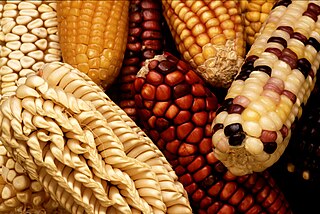 W
WAgricultural biodiversity is a sub-set of general biodiversity. Otherwise known as agrobiodiversity, agricultural biodiversity is a broad term that includes "the variety and variability of animals, plants and micro-organisms at the genetic, species and ecosystem levels that sustain the ecosystem structures, functions and processes in and around production systems, and that provide food and non-food agricultural products.” Created and managed by farmers, pastoralists, fishers and forest dwellers, agrobiodiversity provides stability, adaptability and resilience and constitutes a key element of the livelihood strategies of rural communities throughout the world. Agrobiodiversity is central to sustainable food systems and sustainable diets. The use of agricultural biodiversity can contribute to food security, nutrition security, and livelihood security, and it is critical for climate adaptation and climate mitigation.
 W
WAgriculture employs the majority of Madagascar's population. Mainly involving smallholders, agriculture has seen different levels of state organisation, shifting from state control to a liberalized sector.
 W
WAgroecology is an applied science that involves the adaptation of ecological concepts to the structure, performance, and management of sustainable agroecosystems. In Latin America, agroecological practices have a long history and vary between regions but share three main approaches or levels: plot scale, farm scale, and food system scale. Agroecology in Latin American countries can be used as a tool for providing both ecological, economic, and social benefits to the communities that practice it, as well as maintaining high biodiversity and providing refuges for flora and fauna in these countries. Due to its broad scope and versatility, it is often referred to as "a science, a movement, a practice."
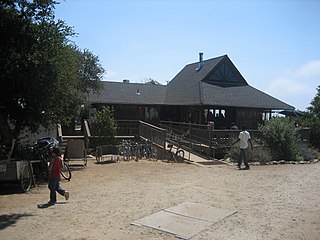 W
WThe Center for Agroecology & Sustainable Food Systems (CASFS) is a center within the Division of Social Sciences at the University of California, Santa Cruz. The mission of CASFS is to research, develop, and advance sustainable food and agricultural systems that are environmentally sound, economically viable, socially responsible, nonexploitative, and that serve as a foundation for future generations. The Center's history dates back to 1967, when English master gardener Alan Chadwick was hired to create a Student Garden Project on the fledgling UC Santa Cruz campus.
 W
WThe Central Soil Salinity Research Institute is an autonomous institute of higher learning, established under the umbrella of Indian Council of Agricultural Research (ICAR) by the Ministry of Agriculture, Government of India for advanced research in the field of soil sciences. The Institute is located on Kachawa Road in Karnal, in the state of Haryana, 125 km from the Indian capital of New Delhi.
 W
WCommunity-supported agriculture or cropsharing is a system that connects the producer and consumers within the food system more closely by allowing the consumer to subscribe to the harvest of a certain farm or group of farms. It is an alternative socioeconomic model of agriculture and food distribution that allows the producer and consumer to share the risks of farming. The model is a subcategory of civic agriculture that has an overarching goal of strengthening a sense of community through local markets.
 W
WA crop wild relative (CWR) is a wild plant closely related to a domesticated plant, whose geographic origins can be traced to regions known as Vavilov Centers. It may be a wild ancestor of the domesticated plant, or another closely related taxon.
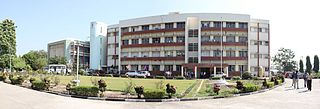 W
WICAR - Directorate of Groundnut Research (ICAR-DGR) formerly known as National Research Centre for Groundnut is a premier national level institute set up by the Indian Council of Agricultural Research, Ministry of Agriculture of India to cater to the needs of agricultural science research in the field of groundnut (peanut) crop in India. ICAR-DGR was established in 1979 at Junagadh, Gujarat to give a fillip to research for enhancing productivity of groundnut in keeping with its importance among the oilseed crops of India. The research centre came into being as the first crop commodity research unit under the category of NRC's of the Indian Council of Agricultural Research, as an autonomous body set up as a registered society. The National Research Centre on Groundnut (NRCG) was elevated to the level of a Directorate in the year 2009 and rechristened as the Directorate of Groundnut Research.
 W
WThe Indian Institute of Natural Resins and Gums, formerly known as the Indian Lac Research Institute, is an autonomous institute, established under the umbrella of Indian Council of Agricultural Research (ICAR) by the Ministry of Agriculture, Government of India for advanced research on lac and other natural resins and gums. The Institute is located at Namkum, Ranchi in Jharkhand, India.
 W
WThe Indian Institute of Soil Science is an autonomous institute for higher learning, established under the umbrella of Indian Council of Agricultural Research (ICAR) by the Ministry of Agriculture, Government of India for advanced research in the field of soil sciences.
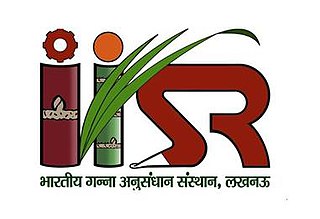 W
WThe Indian Institute of Sugarcane Research is an autonomous institute of higher learning, under the umbrella of Indian Council of Agricultural Research (ICAR) by the Ministry of Agriculture, Government of India for advanced research in sugar cane agriculture. The Institute is located on Raibareli Road, Dilkusha in Lucknow, Uttar Pradesh, India.
 W
WIntercropping is a multiple cropping practice that involves growing two or more crops in proximity. In other words, intercropping is the cultivation of two or more crops simultaneously on the same field. The most common goal of intercropping is to produce a greater yield on a given piece of land by making use of resources or ecological processes that would otherwise not be utilized by a single crop.
 W
WOrganic farming is an agricultural system which originated early in the 20th century in reaction to rapidly changing farming practices. Certified organic agriculture accounts for 70 million hectares globally, with over half of that total in Australia. Organic farming continues to be developed by various organizations today. It is defined by the use of fertilizers of organic origin such as compost manure, green manure, and bone meal and places emphasis on techniques such as crop rotation and companion planting. Biological pest control, mixed cropping and the fostering of insect predators are encouraged. Organic standards are designed to allow the use of naturally occurring substances while prohibiting or strictly limiting synthetic substances. For instance, naturally occurring pesticides such as pyrethrin and rotenone are permitted, while synthetic fertilizers and pesticides are generally prohibited. Synthetic substances that are allowed include, for example, copper sulfate, elemental sulfur and Ivermectin. Genetically modified organisms, nanomaterials, human sewage sludge, plant growth regulators, hormones, and antibiotic use in livestock husbandry are prohibited. Organic farming advocates claim advantages in sustainability, openness, self-sufficiency, autonomy/independence, health, food security, and food safety.
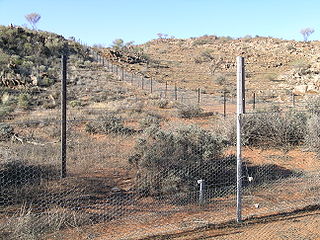 W
WOvergrazing occurs when plants are exposed to intensive grazing for extended periods of time, or without sufficient recovery periods. It can be caused by either livestock in poorly managed agricultural applications, game reserves, or nature reserves. It can also be caused by immobile, travel restricted populations of native or non-native wild animals. However, "overgrazing" is a controversial concept, based on equilibrium system theory. A strong indicator of overgrazing is where additional feed needs to be brought in from outside the farm, often to support livestock through the winter. Traditionally this feed was sourced on the farm, with fewer animals being kept and some fields being used for hay and silage production. Modern farm businesses often choose to keep more animals than their land can support alone; buying in external feed to offset this.
 W
WThe Pasture beech is a particular species or growth habit of the beech which developed in the Black Forest, because the young trees growing on pastures or in pastoral forests were nibbled by the grazing animals, above all cows and goats, i.e. their leaves and branches were eaten and, as a consequence, they have no main trunk and grow bushy.
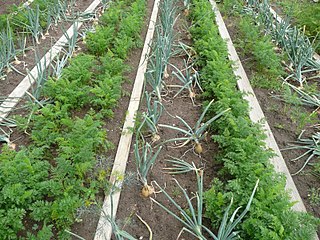 W
WPolyculture is a form of agriculture in which more than one species is grown at the same time and place in imitation of the diversity of natural ecosystems. Polyculture is the opposite of monoculture, in which only members of one plant or animal species are cultivated together. Polyculture has traditionally been the most prevalent form of agriculture in most parts of the world and is growing in popularity today due to its environmental and health benefits. There are many types of polyculture including annual polycultures such as intercropping and cover cropping, permaculture, and integrated aquaculture. Polyculture is advantageous because of its ability to control pests, weeds, and disease without major chemical inputs. As such, polyculture is considered a sustainable form of agriculture. However, issues with crop yield and biological competition have caused many modern major industrial food producers to continue to rely on monoculture instead.
 W
WRegenerative agriculture is a conservation and rehabilitation approach to food and farming systems. It focuses on topsoil regeneration, increasing biodiversity, improving the water cycle, enhancing ecosystem services, supporting biosequestration, increasing resilience to climate change, and strengthening the health and vitality of farm soil. Practices include recycling as much farm waste as possible and adding composted material from sources outside the farm.
 W
WSeedChange, formerly known as USC Canada, is a non-profit organization that works with farmers around the world, including in Canada, to strengthen their ability to grow food sustainably with locally adapted seeds. The organization was founded in 1945 by Lotta Hitschmanova as the Unitarian Service Committee of Canada. It updated its name in October 2019, a few months short of its 75th year.
 W
WSterling College is a private college in Craftsbury, Vermont. Sterling is one of eight colleges in the Work College Consortium and its curriculum is focused on ecological thinking and action through majors in Ecology, Environmental Humanities, Outdoor Education, Sustainable Agriculture, and Sustainable Food Systems. The college is accredited by the New England Association of Schools and Colleges and the Association for Experiential Education.
 W
WSustainable agriculture is farming in sustainable ways, which means meeting society's present food and textile needs, without compromising the ability for current or future generations to meet their needs. It can be based on an understanding of ecosystem services. There are many methods to increase the sustainability of agriculture. When developing agriculture within sustainable food systems, it is important to develop flexible business process and farming practices.
 W
WA vegetable box scheme is an operation that delivers fresh fruit and vegetables, often locally grown and organic, either directly to the customer or to a local collection point. Typically the produce is sold as an ongoing weekly subscription and the offering may vary week to week depending on what is in season.